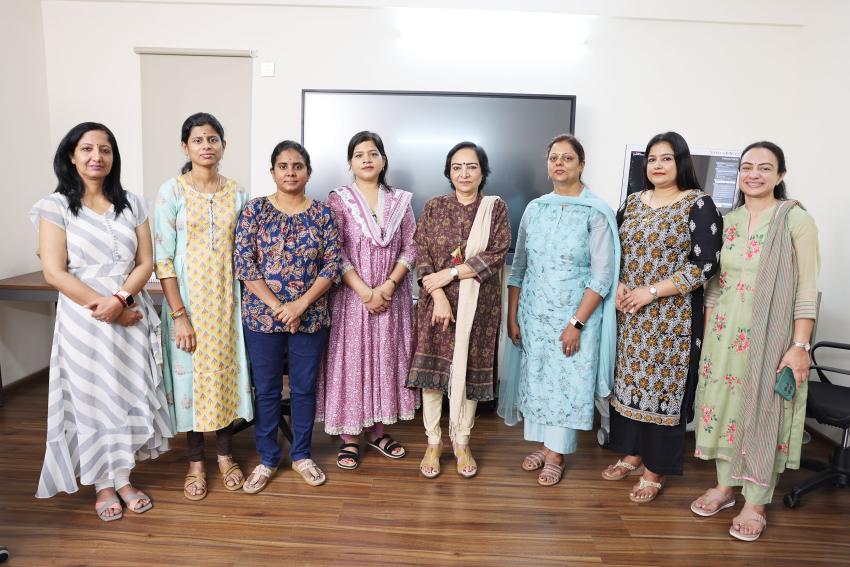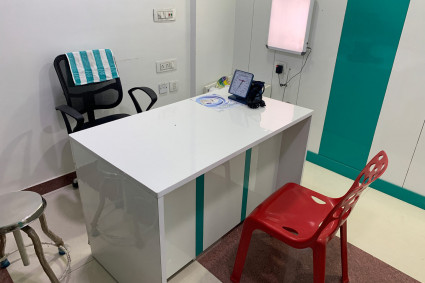
Everyone is curious about the process of IVF and everyone wants to know what is IVF and when it is done. Not just the patients, but also the doctors enrolled for a Fellowship in Reproductive Medicine. IVF is an advanced assisted reproductive technique in which eggs and sperms are taken out and their fertilization is done in the lab. The eggs are transferred to the uterus through embryo transfer. This is an advanced IVF technique and more than 8 million babies have been born worldwide.
Today we will talk about this technique, who should get it done, when it should be done, what is the success of this technique and which patients can benefit from this technique. In this article we will know about when and how to do IVF.
There is a very interesting fact:
· If your eggs are being made, then IVF can be done with your eggs and husband's sperms.
· If your eggs are not being made, then IVF can be done with donor egg.
· If husband's sperms are nil and there are no sperms in the testes, then IVF can be done with donor sperm.
· And if there is a problem in both, then IVF can be done with embryo donation.
So, in every case, IVF is a very rewarding procedure. Once it is decided that you need IVF, then some tests have to be done. These are the main tests, hormone tests, some blood tests, semen count, because that is very important, X-ray of the tubes or sonosalpingography is done to check whether the tubes are closed or not.
If it is closed, then from where it is closed and there is no hydrosalpinx. Hydrosalpinx means the flow of the tubes and their dilation. In such a situation, such dilated tubes are closed before IVF or their connection is removed from the uterus. So that the fluid of hydrosalpinx does not drip on the uterus and never allows the embryo to grow. That is why it is very important to check whether there is hydrosalpinx in the tube or not. And the most important investigation which tells us a lot about the reproductive power of a woman is transvaginal ultrasound. With this, we not only get to know about the lining of the uterus, its thickness, morphology, whether it is capable of conceiving an egg and pregnancy or not. Apart from this, we also get to know about the ability of ovaries, the capacity of ovaries to produce an egg, whether there are ovarian reserves or not. The process of IVF is an advanced ART technique. It is not a single step procedure. It is an ongoing procedure. Until you get success, you do not need to repeat IVF.
According to international literature, the duration of one cycle of pregnancy is 45-55%. The process of IVF can be divided into 5 steps.
· The first step is the most important, i.e., ovarian stimulation. Normally, a woman can conceive only one egg. But in IVF, we need at least 10-15 eggs so that we can conceive at least 7-8 embryos. Some embryos are transferred and some extra embryos are frozen for future embryo transfer cycles. This ovarian stimulation is done in two ways. Either long protocol, which is a 28-day process, or short protocol or antagonist protocol, which is a 14-day process. With all these processes, we can conceive eggs. As soon as the eggs are ready, the ovulation trigger is given. After 36 hours of ovulation, IVF is done.
· The second step is the ovum pickup. When the ovum is triggered, the ovum is removed from the ovum by transvaginal anaesthesia. In medical terms, it is also called OPU or ovum pickup.
· The third step is the fertilization step. In this, the eggs are taken to one side. On the same day, the husband gives a fresh semen sample. If the husband is not present at the time of IVF, then cryo-free semen can also be used. Both the egg and sperm are fertilized in the lab. After 16 to 18 hours, it is checked whether the egg is fertilized or not.
· The fourth step is embryo culture. This is done in the lab. The environment in the uterus and fallopian tubes is created in the lab. So that the fertilized egg can move forward. It can be converted into an embryo. And good embryos can be made in the lab. For this, the temperature of the lab, oxygen concentration, CO2 concentration, humidity of the environment, as well as the pH of the culture media are given special attention. So that we get grade 1 embryos. On the second day, 6 to 8 embryos are prepared. It is seen that how many embryos have been made. How is their grading? They are graded from grade 1 to grade 4. And only grade A embryos are the best embryos. We keep them ready for embryo transfer.
· The fifth step is embryo transfer. This is the last step of IVF. But it is a very important step. Because it depends on our success. Before embryo transfer, the number of embryos is decided. How many are transferred? And a photograph is taken. It is discussed with the patient. Normally, 2 to 3 embryos are transferred. All this is discussed with the patient. And now the patient is ready for embryo transfer.
The process of IVF is a very rewarding process.
When?
· If your ovaries are closed.
· The process of making eggs has become weak.
· Or less eggs have started to be made.
· Or 40 years old and eggs have stopped to be made.
· Or unexplained infertility.
· Cervical factor infertility.
· Or the husband's count is less than 10 million.
Then you take support of this process. More than 8 million children have been born with IVF technology all over the world. You should also take support of this, if you need it.
Factors Affecting IVF Cycle
· First thing is age. If your age is less than 30 years, then you will have to make less cycles as there will be pregnancy in less cycles. But if your age is more than 35 years or more than 40 years, then you will have to do two things.
- One is that you will have to do cycles continuously as the older you are, the more your embryo will be under down and the less the pregnancy.
- And apart from that, the older you are, the more cycles you will have to make. So, first thing is age.
· Second thing is what disease do you have due to which you have to do IVF. So, if you have endometriosis. Endometriosis is such a thing in which it is difficult to do pregnancy in IVF. Or you have very severe PCOD. In these conditions, or tuberculosis has been there. In these conditions, as the success rate is down, so you may need to do more cycles as soon as possible.
· Third thing is lifestyle. People underrate this a lot. And people say, what difference does it make? But it makes a lot of difference. People whose lifestyle is such that they are fit. Whose health is good. Whose weight is less. Those who are less stressful. They need less cycles. And this is very important. So, do correct your lifestyle.
· And fourth thing is previous IVF cycles. So, assume that your success rate, if there have been previous IVF cycles. So, according to its cumulative structure, after every IVF cycle, chances increase in the beginning, but decrease later. So, I will explain this to you from the chart. Which you will understand.
These four things are important, which are the determinants.
As per the Journal of Assisted Reproduction and Genetics, it was mentioned the following:
· The success rate for the first cycle is around 35 -40%
· In the second cycle, it is around 57%
· In the third cycle, it is 64%
· In the fourth cycle, it is 71% and,
· In the fifth cycle, it is 75%
So, understand one thing in your mind. If you are not pregnant in the first cycle, it does not mean that you will not be pregnant. Generally, people get pregnant by the third or the fourth cycle.
Q1. How many cycles are recommended?
A: American Society of Reproductive Medicine recommends 6 cycles.
Q2. How many cycles are the chances of a successful pregnancy?
After 3 to 4 cycles. In fact, after 4 cycles.
Q3. There is a 65 to 70% chance of you being pregnant. Is there anything else that affects the success of IVF?
A: Yes. Age is a very big determinant. The younger you are, the faster and less cycle you will need. The older you are, the more you will need. If you are older, do not waste time. Get your cycles done quickly.
Q4. Does medical history affect the number of cycles?
A: Yes, it does. If you have endometriosis, tuberculosis, then you may need more cycles. But after getting these cycles done, you may get a baby. Without getting these cycles done, it may be 0%. After getting these cycles done, it may be 4 to 6 cycles. If you get 70 to 75% chance of getting a baby, then it is great.
With dearth of skilled practitioners for Fellowship in Infertility, Padma Shri Prof. Dr. Kamini A. Rao came up with an innovative solution (Medline Academics) for already practicing doctors to continue their education and upgrade their skills, while continuing their practice. Medline Academics offers Hybrid, On-Site and Online training for courses in reproductive medicine. Mentees can choose their preferred mode of education and continue their courses. While the Hybrid and On-Site Fellowship in Reproductive Medicine Program is affiliated with a university which is NMC recognised, the short-term online courses and hybrid courses are certified.
To support the training of doctors, Medline Academics came up with its clinical unit and the top IVF centre in Bangalore – Dr. Kamini Rao Hospitals. Along with patients being treated by the best IVF Doctors in Bangalore, this centre is also known for providing accurate training in handling the toughest cases with ease under the guidance of the pioneer herself – Dr. Kamini A Rao. Whether it is observing the cases with senior doctors or getting a chance for Hands-on, the training is absolutely in-depth and there is hardly any chance to make errors.




